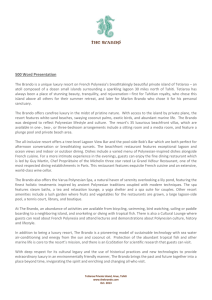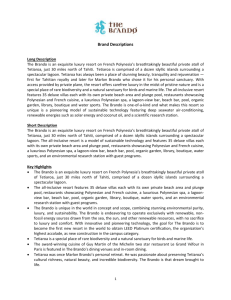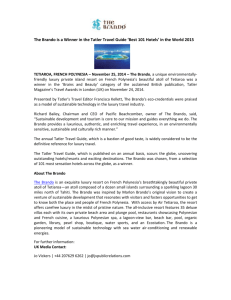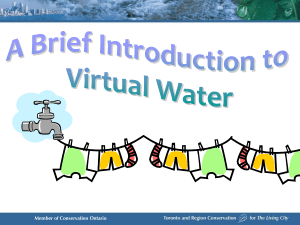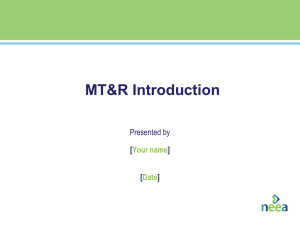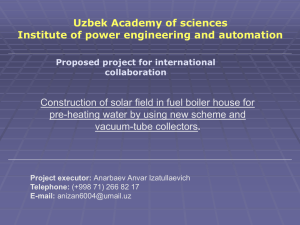L*aménagement de l*atoll de Tetiaroa
advertisement
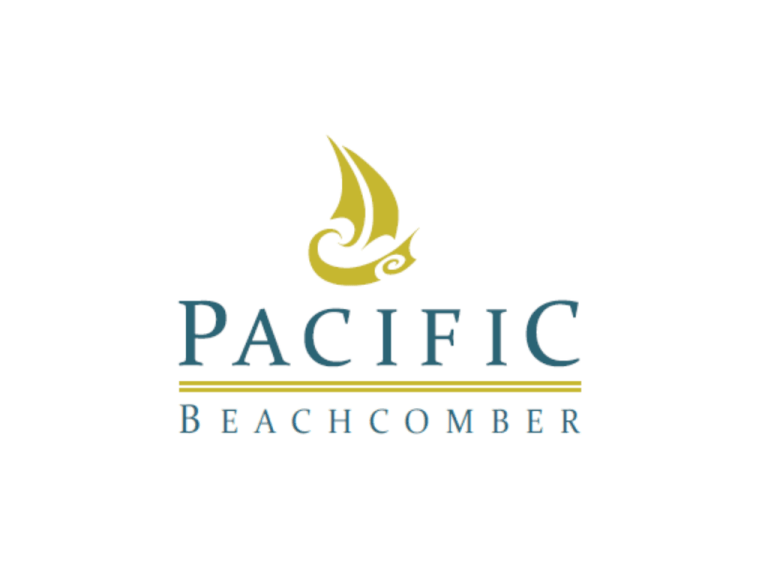
Sustainable Development Environment Liveable Viable Sustainable Culture 2 Equitable Economy Residences Western Beach Villas Conservation Staff Village Tetiaroa Eco-Station Research facility Technical area Gardens Spa The Brando Hotel Residences Southern Beach Villas Sustainability Goals for The Brando: Net Zero Energy Use Site Water Balance Materials : Local, Recycled, Renewable Carbon Neutral Transportation Market Recognition (Validation - LEED) Net Zero Energy Goals: •Site Energy Net Zero: All energy consumed at The Brando is generated at The Brando •Source Energy Net Zero: All energy consumed at The Brando is generated from renewable energy Water Balance Goals: • Low Energy Water Independence Limit reliance on desalination • Protect the Water Lens Conservative drawdown Prevent Contamination Material Goals: • Utilize local materials • Utilize recycled content materials • Source wood sustainably • Use low toxic emissions materials • Recycle construction waste Carbon Neutral Transportation Goals: • Net zero carbon impact in operational phase • Account for travel related emissions Guests Staff Goods / Fuel / Materials / Waste Market Recognition/Validation: LEED Rating System • Leadership in Energy and Environmental Design US Green Building Council Label International Recognition • Point System Guideline to Achieving Goals Sustainable Sites Water Efficiency Energy & Atmosphere Materials and Resources Indoor Environmental Quality • 3rd Party Measurement and Verification Certification based on pre-requisites and credits – Silver, Gold, Platinum Net Zero Energy Methodology: • LEED approved energy simulation program • All buildings simulated as designed • Results Provide profiles of energy loads, and Predict % energy savings • Model is not complete; final savings to be determined based on design changes The Brando - Energy Load Profile 100% Process Loads ~ 26% (Refrigeration, Cooking, Dishwashing, Exterior Lighting, Cart Charging, Water Treatment, Waste Water Treatment) Building Loads ~ 74% 80% Process Loads 60% Staff Housing 40% Villas 20% All Other Buildings (LEED Regulated) 0% Load Profile The Brando - Regulated Load Profile 8% 9% 30% 39% 14% People Equipment Infiltration Conductivity Solar Gain Net Zero Energy Modeling Results 30 25 24.7 20.3 20 15 10 5 0 Tahiti Baseline ASHRAE Kwh/SF/Yr ASHRAE Requirements: -Air barrier -Lighting power -Lighting controls -HVAC controls -Insulation -Glass g-factor Net Zero Energy Modeling Results 30 25 24.7 20.3 20 15 11.4 10 5 0 Tahiti Baseline ASHRAE Kwh/SF/Yr Design Additional Design Measures: -SWAC (Sea Water A/C) -Equipment Loads -Natural Ventilation Net Zero Energy Modeling Results 30 25 24.7 20.3 20 15 11.4 10 4.1 5 0 Tahiti Baseline ASHRAE Design Kwh/SF/Yr Design w/ Renewables Renewable Sources: -500Kw PV Array -Solar Hot Water (For LEED, SWAC is a design feature, not a renewable energy) Net Zero Energy Modeling Results 30 25 24.7 20.3 20 15 11.4 10 4.1 5 0 Tahiti Baseline ASHRAE Design Kwh/SF/Yr Design w/ Renewables -Energy reduction of 80% of total loads -Achieves all LEED points for energy (15% reduction required) Energy Savings Profile 5% 5% 6% SWAC Equipment Lighting Envelope Nautral Ventilation 13% 71% SOLAR Energy Voltaic panellings SWAC 2,4 MW f Zinc-Bromine Flow-Batteries Pipe Ø 450 mm Intake: 900 m deep 20 + years Service Design Life 1000’s of Deep discharge cycles over service lifetime « Environment friendly », made from highly-recyclable materials « BIOFUEL » Energy Coconut - Coprah oil Generators CETO Wave Energy Electricity + Desalinization Energy Requirement Production Capabilities 2.4 MWf Cold Water 1.4 MWf for the hotel 1.0 MWf for the residences 3,455,000 KWh per year Electricity 2,100,000 KWh per year for the hotel 1,355,000 KWh per year for the residences Energy Storage Water 110 m3 of drinkable water per day SWAC Pipe diameter 450 mm Coconut Oil Generators 4 units of 450KW using 100% of coconut oil; 600 T of coconut oil per year Solar Panels 500 KWC installed; 2950 panels of 170WC (1.3 m2 per panel); 675,000 KWh per year ZBB Flow Batteries 2 modules of 500 kW 3 water networks: 1. Drinkable water network – lens & desalination (osmosis) 2. Non-drinkable water network – lens + rain water 3. Watering network – Sewage station Underground lens 70 m3 per day on Onetahi; 70 m3 per day on Tiaranau Desalination 110 m3 per day CENTRALISED SEA WATER AIR CONDITIONING Building s Titanium cold Exchanger Shallow warm water effluent Chilled water closed loop distribution Cold water : 5/6°C Temperate water : 12/13°C c Deep cold water intake Sea Water Primary closed loop Chilled fresh water Secondary closed loop Sea Water Air Conditioning (SWAC) SWAC POSITION Selected Track Ocean Reef Barrier Motu Onetahi – project site Lagoon 2 400 m of pipe 600 m in lagoon trench 140 m in ocean trench 1.660 m free floating weighted to bottom Motu CETO Technology – Wave Energy Net Zero Energy: Closing the Gap Options to reduce final 4.1 load: 30 Site Net Zero: -Increase PV array > 500Kw -Develop storage system – Zinc Bromine Flow Battery -Wave Energy 25 20 15 10 5 4.1 0 Design w/ Renewables Kwh/SF/Yr Source Net Zero: -Bio-fuel generators (coconut oil) -Carbon offsets for transport of fuel to island * *Note: 90% of all coconut oil produced in FP is exported thus transported away using fuel Water Balance Goals: • Low Energy Water Independence Limit reliance on desalination • Protect the Water Lens Conservative drawdown Prevent Contamination Water Balance Methodology • Conservation Low flow fixtures and efficient equipment • Reduce Potable Demand Use reclaimed effluent WCs, Urinals, Irrigation, Laundry, Fire Suppression Rainwater Harvesting • 100% Waste Water Treatment to Potable Standard Infiltrated effluent replenishes Lens Ecological treatment Low energy Minimal sludge Water Load Reduction Fixture and Equipment Standards Flush Fixtures Max Water Use Dual flush toilets 6.06 / 3.03 liters per use Urinals 1.89 liters per use Flow Fixtures Max Water Use Lavatories Public Areas 1.9 liters per minute Lavatories Villas 8.3 liters per minute Kitchen Sinks 8.3 liters per minute Showers 9.5 liters per minute Process Use Equipment Max Water Use Clothes Washer 307 liters/m2/cycle Dishwasher with racks 3.8 liters per rach Ice Machines 76 liters / 45kg Food Steamers 7.6 liters / hr Pre-rinse spray valves 5.3 liters / minute Water Profile End Use Potable Drinking Water 2.0 Irrigation 7.0 Showers 16.0 Sinks 2.0 WCs / Urinals 5.3 Plunge Pools 4.0 Swimming Pool 5.0 Laundry 6.0 Dishwashing 9.5 Maintenance 3.0 Spa 25 Total m3 / day 84.8 Non-Potable Water Demand Split End Use Drinking Water Potable 2.0 Irrigation 7.0 Showers 16.0 Sinks 2.0 WCs / Urinals 5.3 Plunge Pools 4.0 Swimming Pool 5.0 Laundry Dishwashing 6.0 9.5 Maintenance Spa Total m3 / day Non-Potable 3.0 25 63.5 21.3 Water Profile Potable Split Drinking Water 3% 25% Showers 25% Spa 40% Sinks 3% Plunge Pools 6% 75% Pool 8% Dishwasher 15% Non-Potable Potable Site Water Balance Profile 120% 10% more efficient than LEED 100% 25% less water use from lens or desalination 80% 60% Achieves all LEED points for water 40% 20% 0% LEED Baseline Initial Design Final Design Material Goals: • Utilize local materials • Utilize recycled content materials • Source wood sustainably • Use low toxic emissions materials • Recycle construction waste Materials Regional Materials Limited island resources Ironwood, non-endemic wood Pandanus Coral, sand aggregate Rapidly Renewable Materials Pandanus Bamboo flooring FSC (Forestry Stewardship Council) certified sustainably harvested and handled wood for: Structural Framing Flooring Sub-flooring Wood doors Finishes Fixed Furniture Recycled Content Palmex roofing Composite decking Cement Iron Insulation Composite Wood Products Urea-formaldehyde free (Carcinogenic, respiratory irritant, allergic reactions) Fiberboard, Particle board, plywood Volatile Organic Compounds (VOCs) Sealants, paints, primers, adhesives Limits and threshold compliance Contribute to excessive ground ozone Cause smog, crop destruction, respiratory ailments Construction Waste Management Divert from landfill through recycling or reuse 50% of waste from: Concrete/Masonry Carboard Plastics Metals Wood Carbon Neutral Transportation Goals: • Net zero carbon impact in operational phase • Account for travel related emissions Guests Staff Goods / Fuel / Materials / Waste Brando Boundary Options Boundary 1: All carbon associated with travel on the island Boundary 2: Transportation from Tahiti to The Brando Boundary 3: International transportation to Tahiti Boundary 1: Tetiaroa Bikes provided for all guests All motorized vehicles are electric Boundary 2: Tahiti Docks and airport within 500m of public transport Shuttle to Air Tetiaroa from ICT international terminal Staff incentives for using public transportation Carbon-offset purchase for inter-island transport Boundary 3: International Guest option to purchase carbon offsets Issues Encountered in Sustainable Goals Tight insulated envelope vs traditional breathable design Risk of humidity damage Cost/benefit of insulation with low marginal cost of SWAC May encourage more AC use Window design Solar gain and conductivity loss vs light energy savings Closing the water loop Effluent to potable Administrative opposition Rationale of roof rain water capture (lens reservoir) Difficulty and cost of closing energy gap Transportation and boundary definition are key Limits to going green in remote island locations Local recycling capability Availability of reused, recycled or local materials Politics (pandanus monopoly), availability MAURU’URU !


